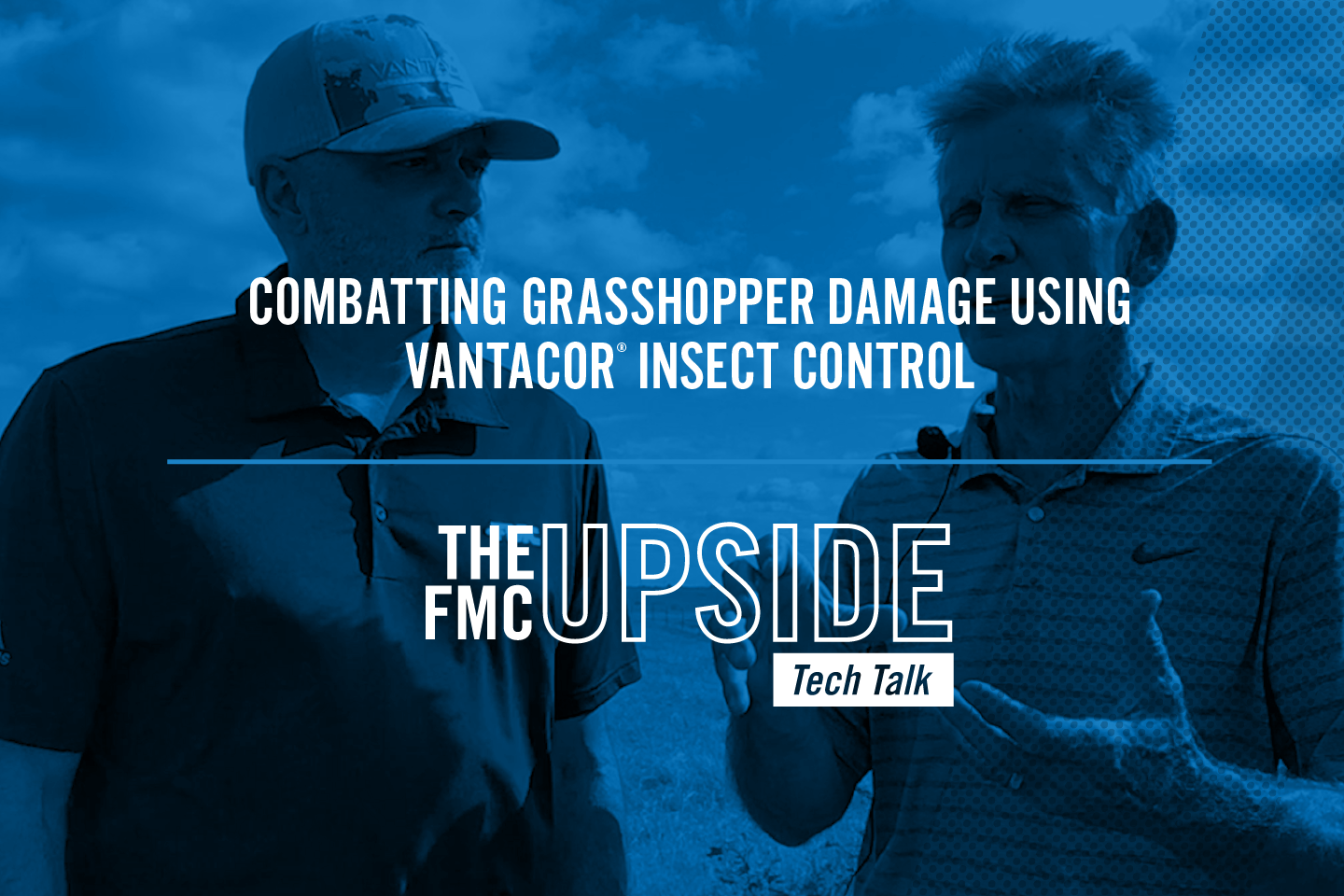Grasshoppers can be one of the most destructive insect pests of crops and rangeland in the United States. Grasshoppers are a threat every year, but can be very destructive in outbreak years. The voracious feeding habits of grasshoppers are legendary. In proportion to their body weight, they consume grasses eight times faster than beef cattle.
Populations of these devastating pests fluctuate widely from year to year due to environmental conditions and other variables. Severe outbreaks are often associated with a series of dry years. Hot and dry weather in early spring is frequently correlated with severe infestations. Ranchers and growers should be aware of the grasshopper potential early in the season and apply control measures while the hoppers are in their early stages of development and are most susceptible to insecticides.
During severe infestations, grasshoppers migrate from rangeland and attack cultivated crops. Some species of grasshoppers will breed in cultivated crops and confine their feeding to cropland.
Grasshopper outbreaks
Increasers (+)
| Season | Conditions |
|---|---|
| Spring | Ideal: Continuous warm, dry conditions aid hatching and forage growth for feeding |
| Summer | Intermittent rain helps late hatchers |
| Fall | Extended warmth maximizes egg laying increasing overwintering |
Decreasers (-)
| Season | Conditions |
|---|---|
| Spring | Cold, wet weather delays growth stages Warm, wet weather for more than a week creates fungus and delays growth stages |
| Fall | Early fall shortens egg laying |
| Any | Extreme drought |
Typical life cycle
Some knowledge of the life history of grasshoppers will help in predicting the severity of outbreaks. In most species, the female deposits egg pods in the soil in the fall. A number of factors will determine how many eggs she lays. A long, warm fall will favor production of a greater number of eggs in comparison with a short fall with the onset of an early frost. The egg storage pod is the overwintering form for most of our destructive grasshopper species. The egg pods are able to withstand the most drastic winter weather.
Eggs hatch in the spring. Hatching is triggered when soil temperatures reach a critical level for certain duration day degree development units. Most nymphs hatch from overwintering eggs in May or June. Hatching extends over a prolonged period and usually corresponds to late or early fall oviposition. The nymphs go through five stages, or instars, in their growth to adults. The nymphs are wingless and rely on their well-muscled legs to migrate in their quest for food. The adults are strong fliers and can move considerable distances in short periods of time.
There is only a single generation per year for most species.
Vantacor™ insect control
Vantacor™ insect control powered by Rynaxypyr® active helps protect the yields and quality of animal feed and crops by achieving reliable and consistent control of grasshoppers and many worm pests. Vantacor insect control is highly efficacious and yet at the same time has an excellent mammalian, such as livestock and wildlife, toxicological profile.
Key benefits of Vantacor insect control:
- Long-lasting residual control of damaging Acrididaen pests reducing the need for multiple applications per season.
- Highly concentrated formulation with a low use rate of 0.7-2.5 oz./A.
- Offers all the benefits of Prevathon® insect control powered by Rynaxypyr active plus improved mixing, low use rates, less packaging and an expanded crop label.
- Single active to be used at rate and timing of choosing for resistance management and added flexibility.
- No flaring of mites or aphids and minimal impact on many important beneficial insects.
Vantacor insect control
grasshopper use rates
| Crop | Fluid Ounces per Acre | REI (Hours) | Last Application (Days to Harvest) |
|---|---|---|---|
| Grass forage, fodder and hay | 0.7-1.7 | 4 | 0 |
| Corn (field, pop) | 0.7-1.7 | 4 | 14 |
| Soybeans | 0.7-1.7 | 4 | 1 |
Do not make more than four applications per acre per calendar year. Do no apply more than 5.1 fl. oz./A of Vantacor insect control or 0.2 lb. ai of chlorantraniliprole - containing products per acre per calendar year. The minimum retreatment interval is seven days.
Apply foliarly when grasshopper populations reach local established thresholds to prevent crop damage.
Correct timing of spray applications to nymphal stages and thorough coverage is critical to achieve control.
Always read and follow all label directions, precautions and restrictions for use. Some products may not be registered for sale or use in all states. Vantacor insect control may not be registered for sale or use in all states. Contact your local FMC retailer or representative for details and availability in your state. FMC, the FMC logo, Prevathon, Rynaxypyr and Vantacor are trademarks of FMC Corporation or an affiliate. ©2021 FMC Corporation. All rights reserved. 21-FMC-1713 06/21



